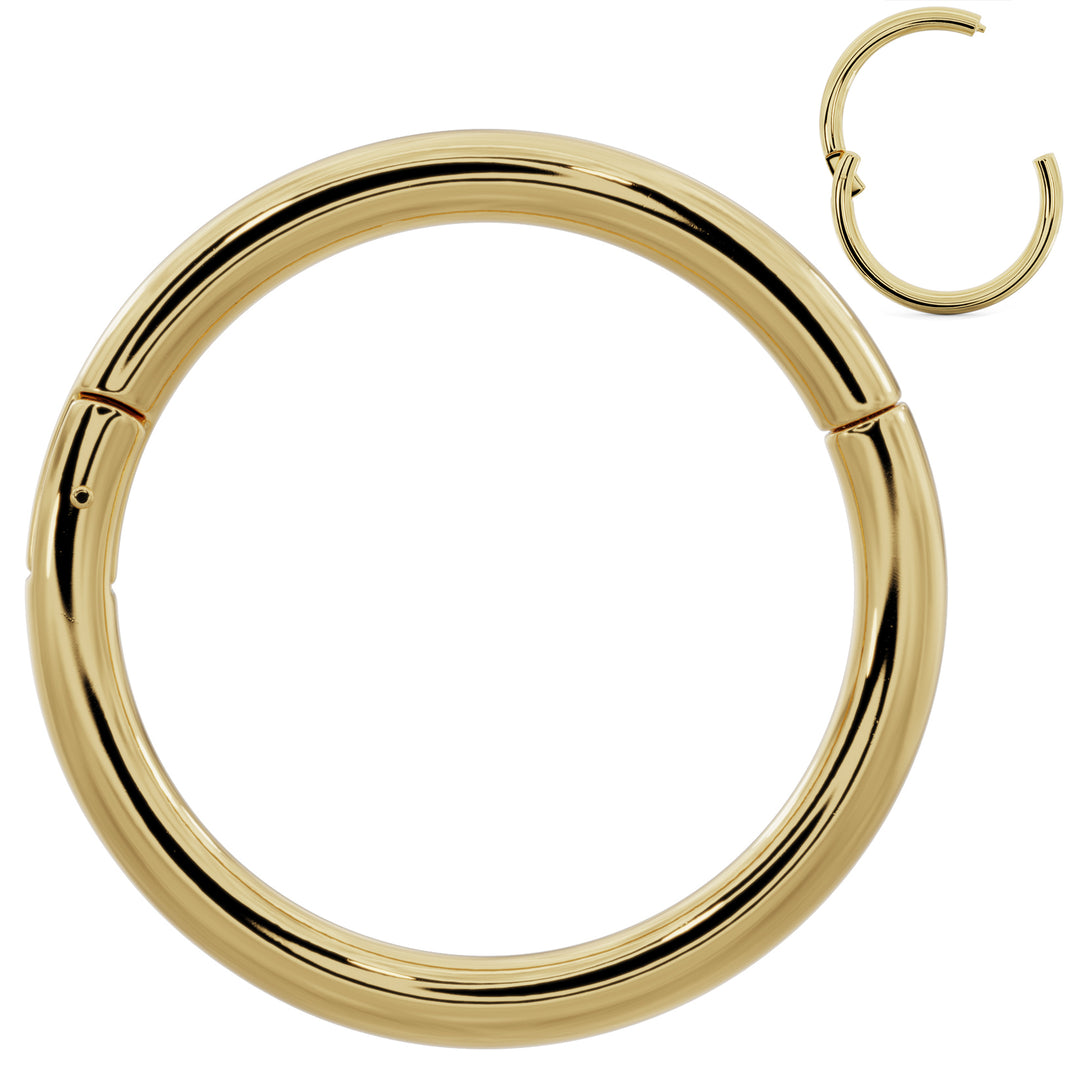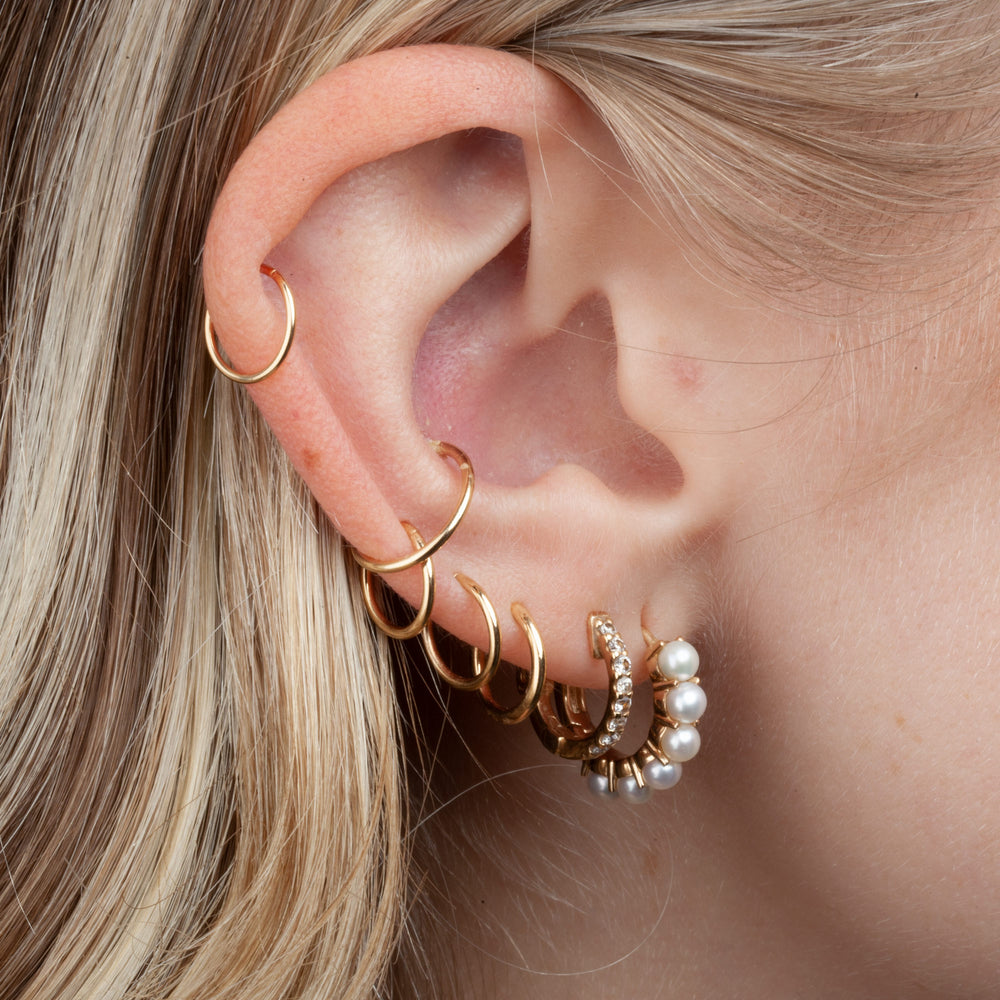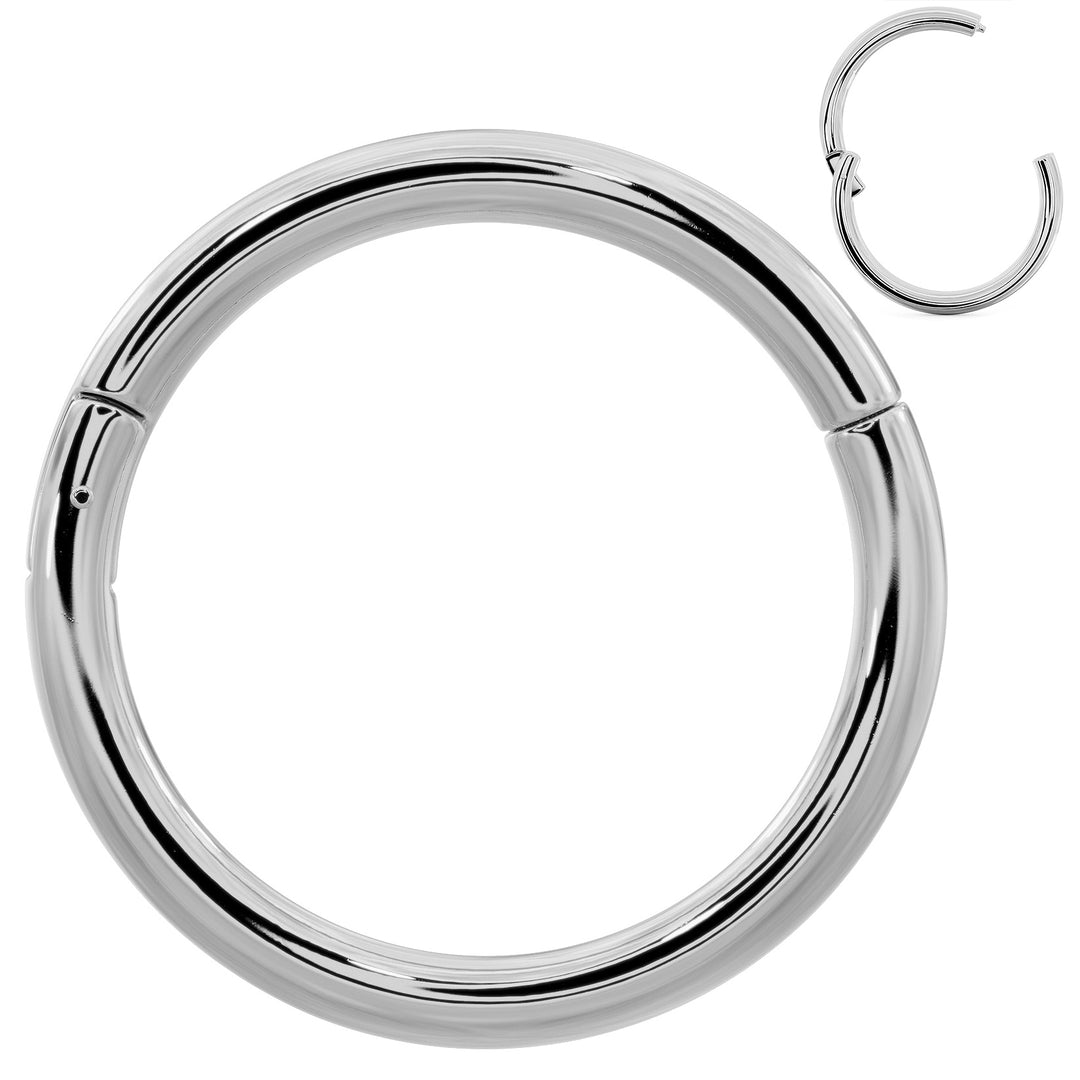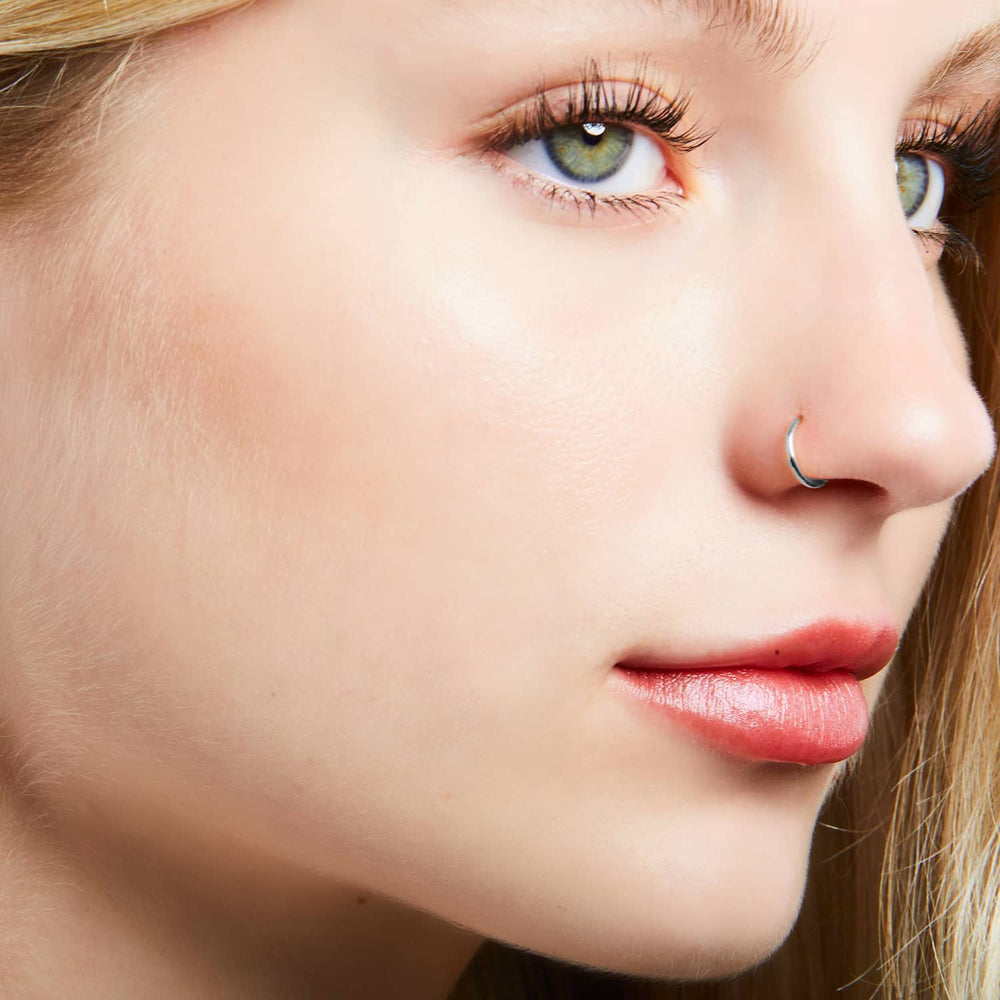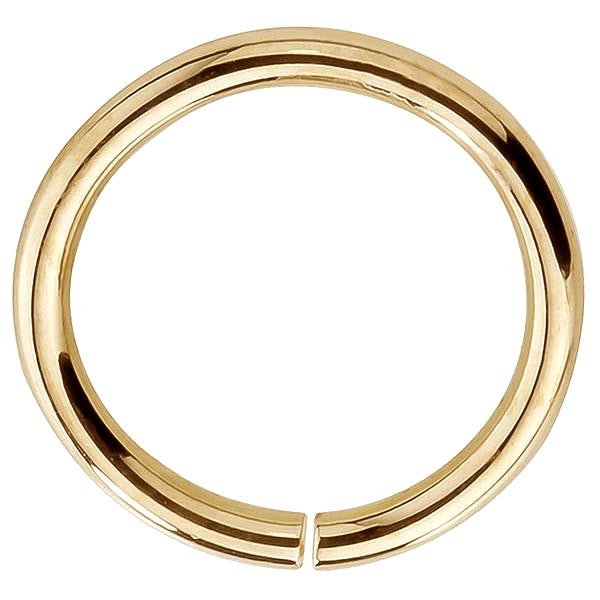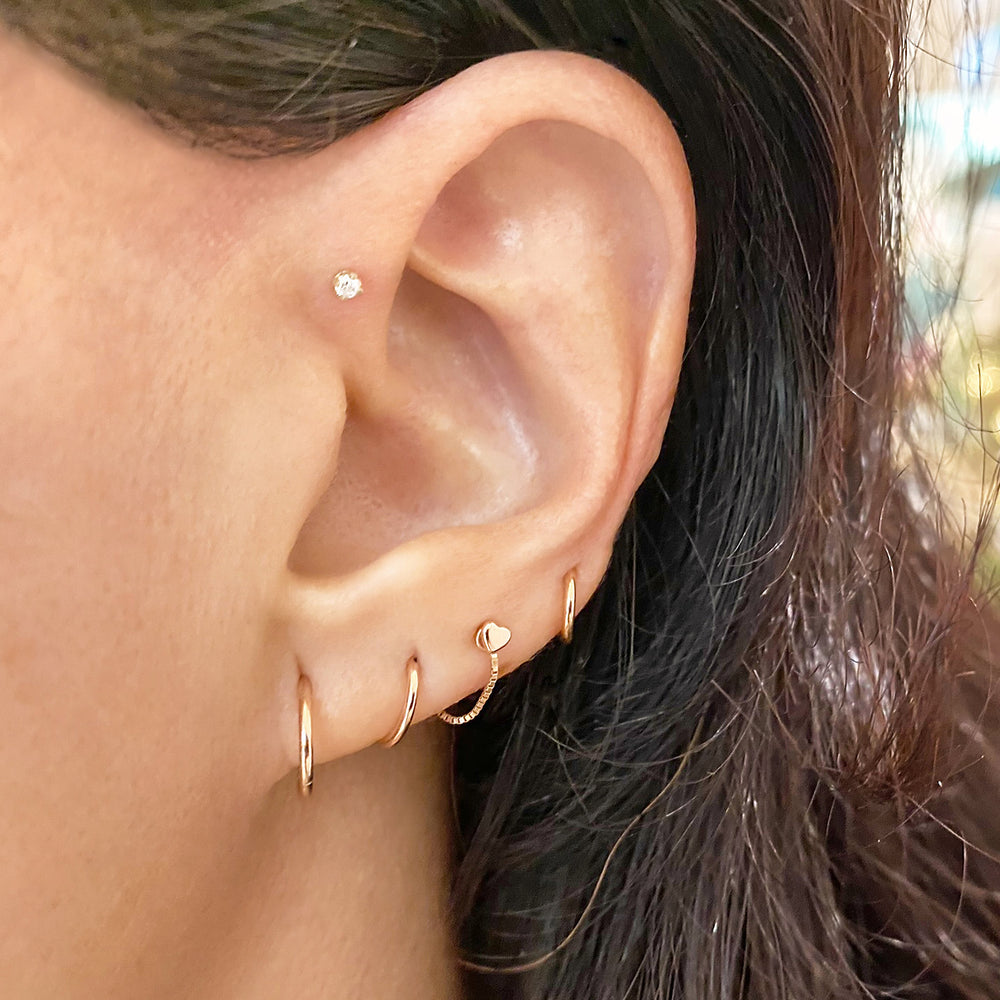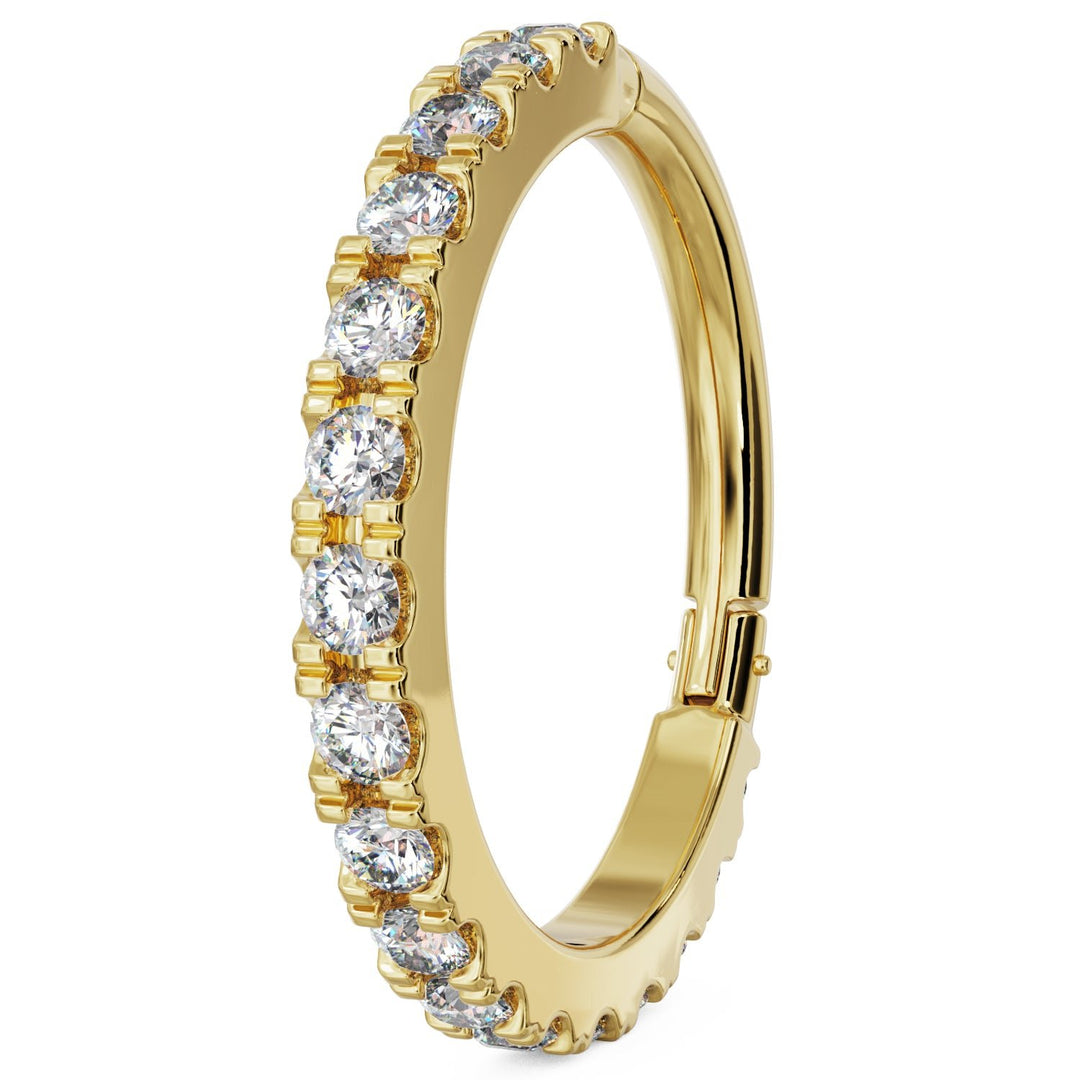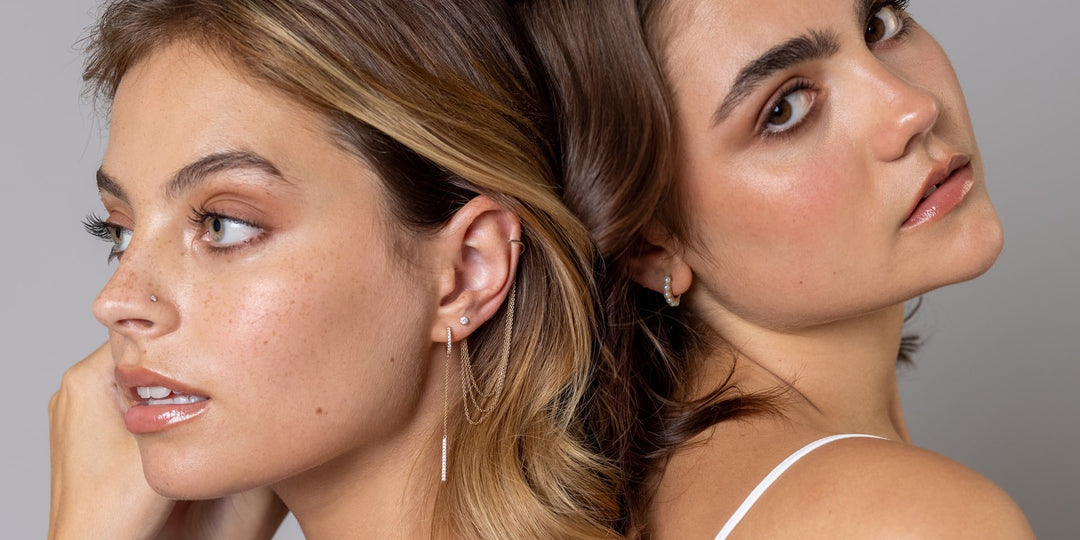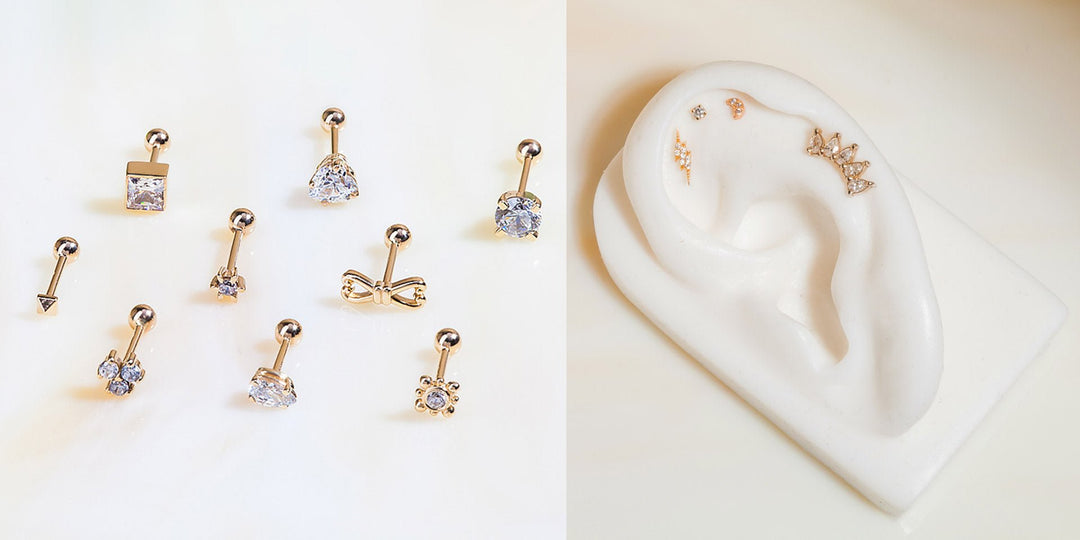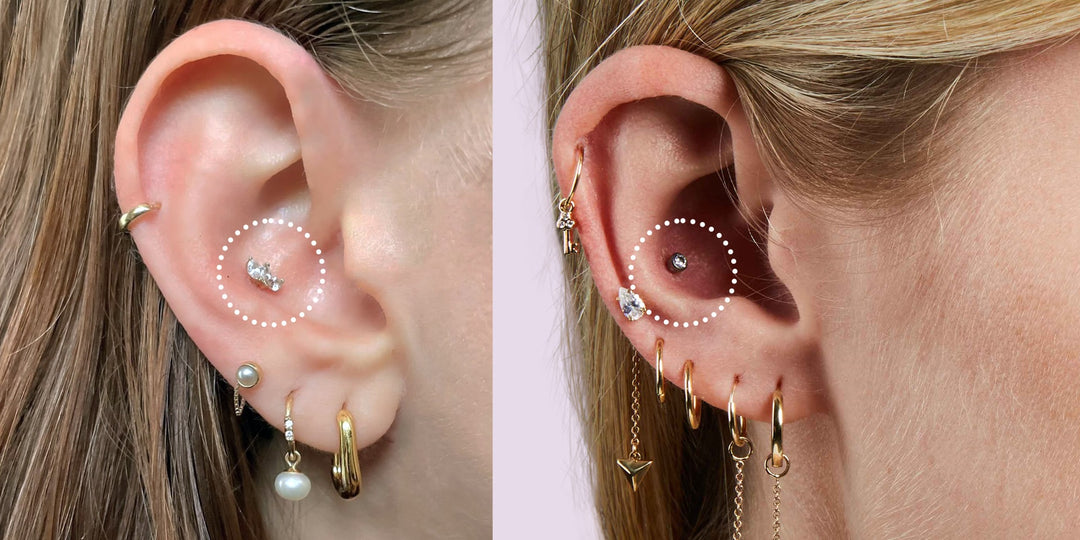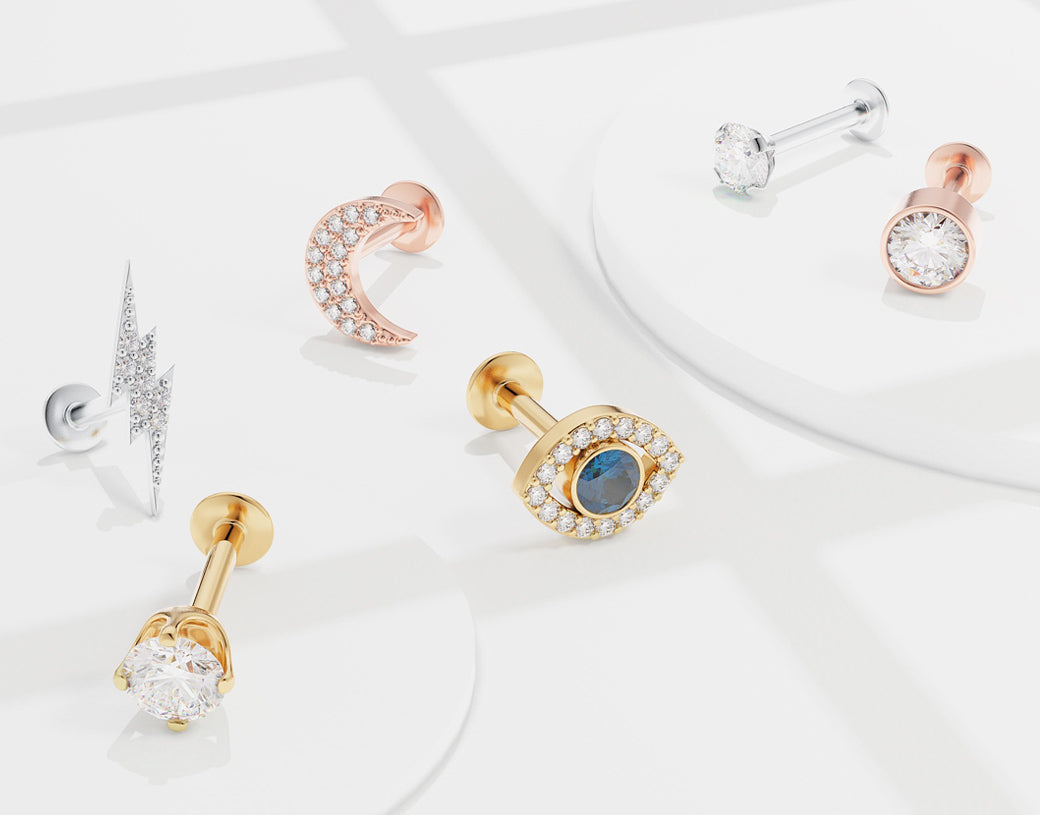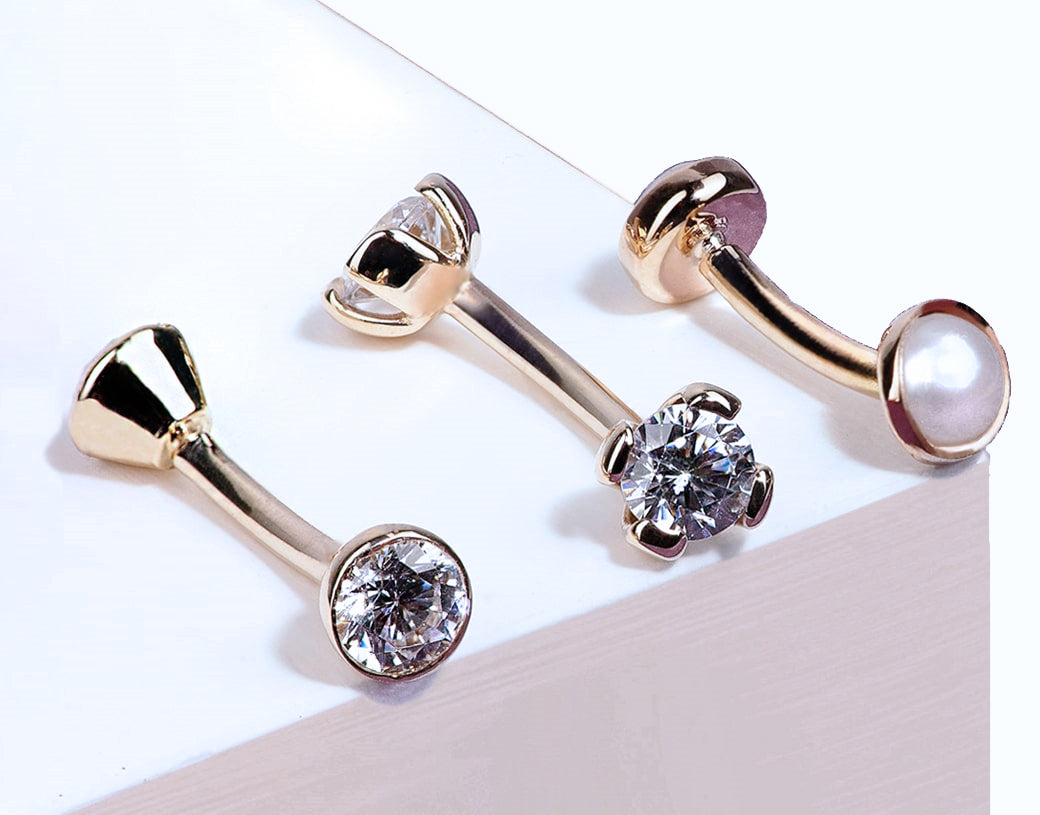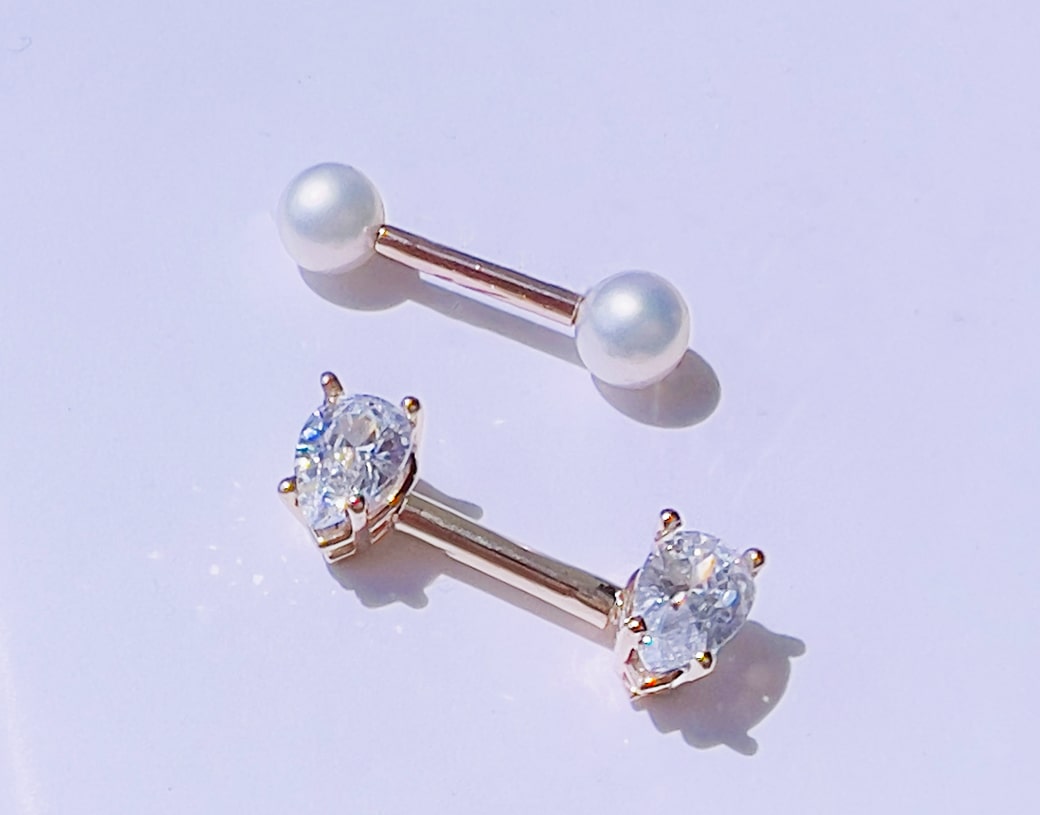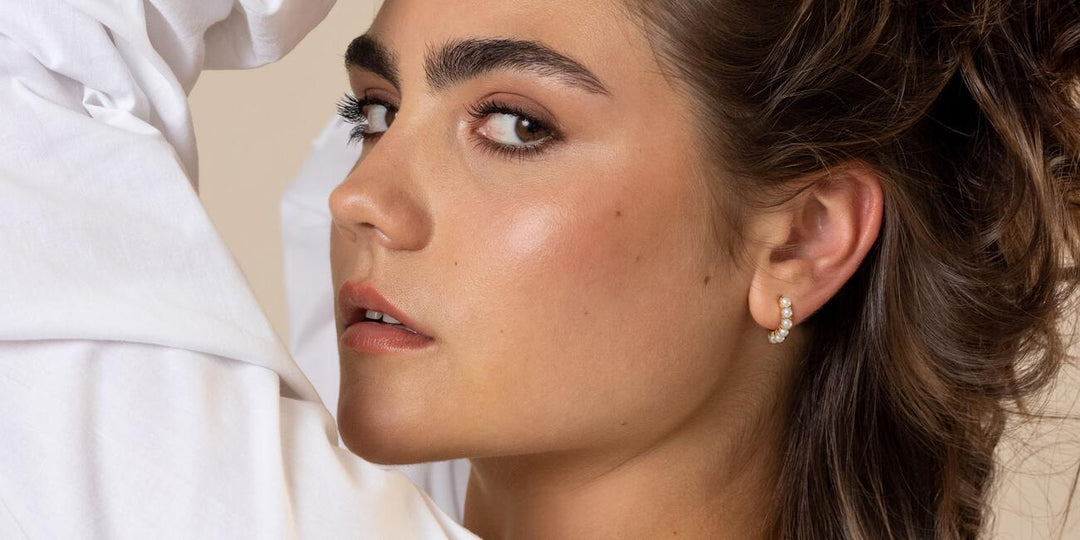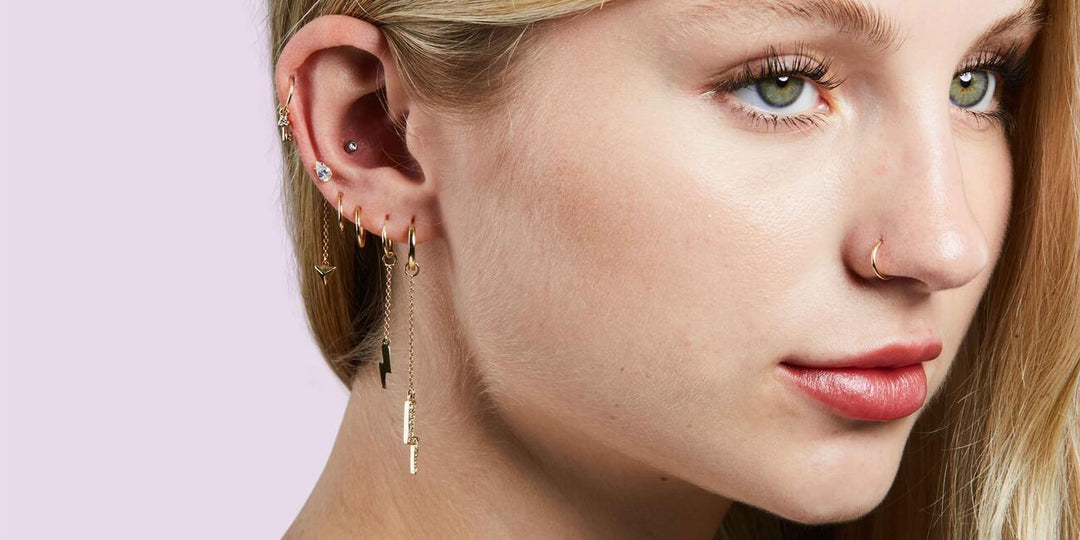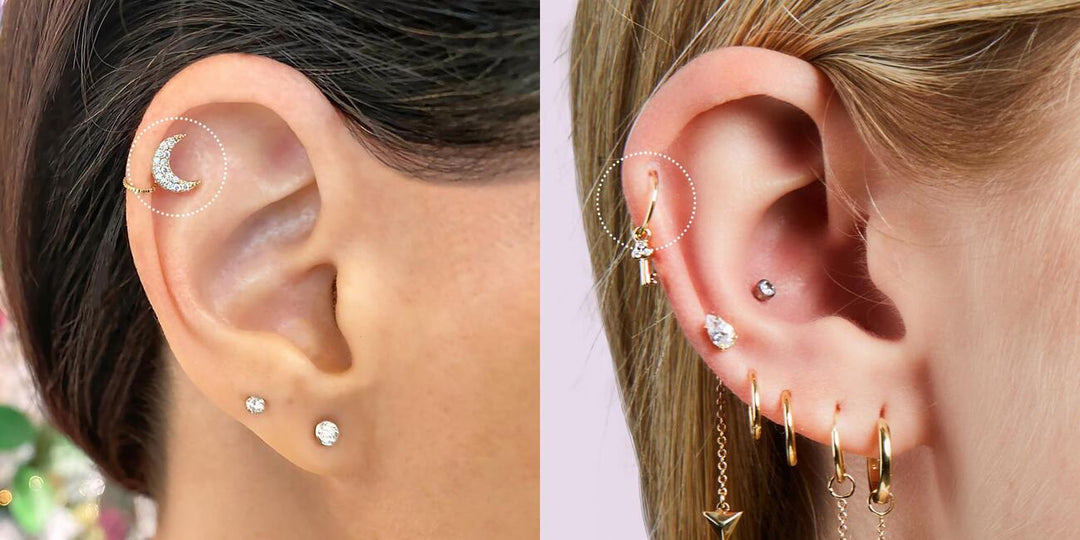Ear Piercings: Everything You Need To Know
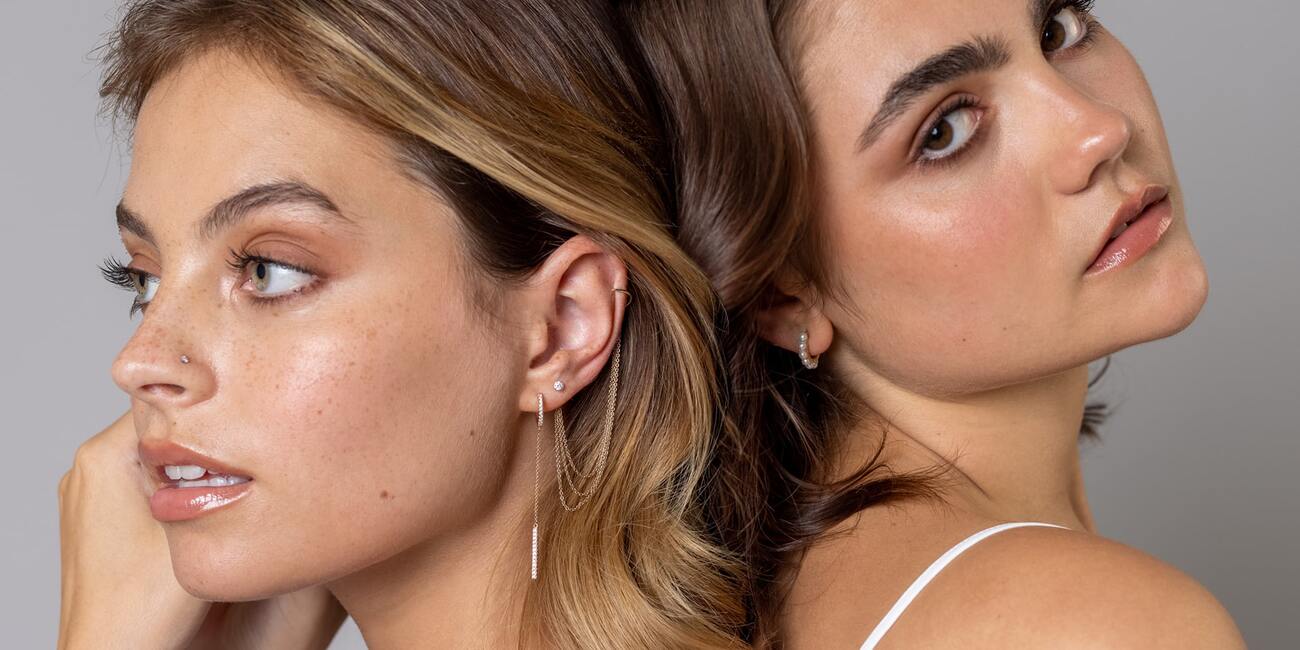

By far the most popular piercing site, the ear offers a plethora of piercing options. In fact, many people are now carefully planning out their cartilage piercings to create unique designs and interesting patterns. But, despite their prevalence, many ear piercings are actually quite difficult to heal. Here’s what you need to know:
About Ear Piercings
Pain level and healing time greatly depend upon the location of your ear piercing. However, generally speaking, you can gauge the pain level based on whether you’re getting your fleshier lobe pierced or piercing the cartilage.
Lobe piercings will feel like a light pinch. They are widely regarded as one of the easiest piercings to get for this reason. This is why it’s often the gateway piercing found on adults and children alike.
Cartilage piercings are considered some of the most painful piercings that you can get. It does vary a bit depending on which cartilage piercing you opt for, but you can expect a substantial pinch. However, the expertise of your piercer will greatly affect your comfort level; an experienced piercer will be able to complete the piercing in one swift movement, and they’ll guide you through your breathing to help keep you calm.
The healing times for ear piercings vary greatly depending on their location.
Lobe piercings will take around 4 - 8 weeks to heal while cartilage piercings will take 3 - 9 months. The great discrepancy between these healing times has to do with the amount of blood flow in each area.
Cartilage is avascular, meaning that not a lot of blood flows through this area. Blood is essential for healing, so it takes much longer for cartilage to heal. For this reason, cartilage is also more susceptible to infection, which could extend the healing period. The lobe has a higher blood flow, so it doesn’t have the same issues.
Related Products
View allEar Piercing Aftercare
Whether you get your lobe or cartilage pierced, the aftercare procedures will be the same. However, since cartilage is brittle and takes longer to heal, it’s more susceptible to complications like scarring, piercing bumps, and infection.

To care for your ear piercing, you should clean it with a piercing aftercare saline solution 2 - 3 times daily. Make sure that you invest in a saline solution that’s meant for piercings. Other types of saline solutions may contain additives that will irritate your piercing. When choosing an aftercare solution, make sure that it only contains salt and water. Some piercing aftercare solutions contain chemicals, namely tea tree oil, that should not be used on a healing piercing. These chemicals are caustic and may cause irritation that can delay healing.
Beyond cleaning your piercing daily, here are some aftercare tips to facilitate healing.
Try not to lie on your piercing. If you get both ears pierced at once, this can be a challenge. Try your best to refrain from sleeping on your side. If you must, make sure that you switch sides every once in a while. You should also be sure to sleep on a clean pillowcase every night. If you don’t feel like washing your pillowcase daily, you can cover your pillow with a clean t-shirt. If you must lay on your side, use a travel pillow, and place your ear in the neck hole so that you can lay on your side without placing pressure on your healing piercing.
Try to avoid snagging. You might be surprised to learn that ear piercings can really get in the way. Your hair, hands, and clothes can all snag on the jewelry. Not only does this hurt, but it could also lead to complications like piercing rejection or scarring. If you have long hair, it might be a good idea to pull it back during the first weeks of healing. In the beginning, as you get used to the jewelry, you should also make sure that you wear clothes that don’t easily snag.
Don’t touch the jewelry. You might be tempted to twist the jewelry in your ear to break away crusties that are natural during healing. This can tear the skin, causing skin irritation and prolonging healing. Instead, you can soak a clean paper towel in saline solution and gently dab the crusties away, taking care not to move the jewelry. Do your best not to absentmindedly play with the jewelry. This can introduce bacteria to the piercing site as well as damage the healing skin.
Keep your piercing dry. Some piercing bumps are caused by dampness. Stay away from standing water (like that found in pools, lakes, and hot tubs), and when you get out of the shower, be sure to dry your piercing fully. You can use the low setting on your hairdryer for fast and easy drying.
Ear Piercing Side Effects
Like any piercing, you may see some side effects from getting your ear pierced. Luckily, most side effects will go away with treatment. They are typically avoidable through proper aftercare, but they may appear even if you do everything correctly.
Because cartilage takes so long to heal, it’s more susceptible to piercing complications, especially piercing bumps. However, if you properly care for your piercing and avoid snags and tears, your piercing should heal just fine.
Piercing infections are among the most talked-about piercing complications, but they’re relatively rare. They occur when the piercing is not properly cleaned. If you clean your piercing daily, there’s no reason why you should develop a piercing infection. Signs of a piercing infection include green or yellow discharge, a feverish feeling around the piercing site, and major swelling or bleeding. If you suspect a piercing infection, visit a medical professional immediately.
Piercing bumps occur due to snags, poor cleaning practices, and irritation. There are three main types of piercing bumps: irritation bumps, pustules, and hypertrophic scarring. If you develop a bump, visit your piercer so that they can determine which type of bump you have and proper treatment. Often, a piercing bump just needs time to go away on its own.
Piercing rejection occurs after a bad snag or if the piercing wasn’t placed properly. While piercing bumps are uncommon in ear piercings, they still can occur. Signs of piercing rejection include red, flaky skin around the piercing site, jewelry that’s noticeably moved, or enlarged piercing holes. If you think your piercing is rejecting, visit your piercer to confirm. Unfortunately, they will likely suggest that you take the jewelry out and let the piercing heal.
A note on keloids: Keloids are often incorrectly diagnosed in the piercing world. Keloids are the result of a genetic condition that only affects about 10% of the worldwide population. They are large, discolored bumps that appear after any injury, including scrapes and bug bites. If you have never had a keloid before and if no one in your family has ever had a keloid before, then it’s nearly certain that the bump appearing on your piercing is not a keloid.
Ear Piercing Types
There are several super-cool different types of ear piercings...
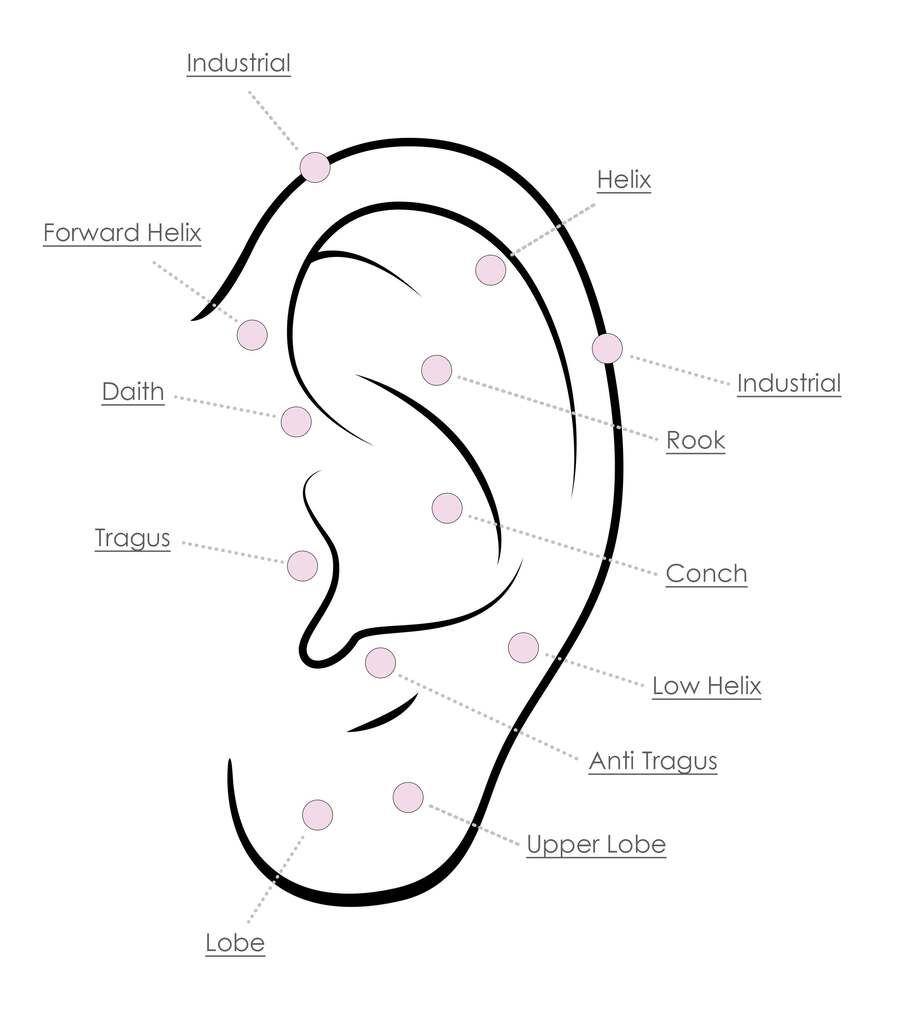
- Lobe Piercing: The lobe piercing appears anywhere in the fleshy part of the ear. Standard placement is usually in the middle of the lobe, but you can get it pierced almost anywhere.
- Auricle Piercing: The auricle piercing is placed in the cartilage on the rim of the ear, right above where the fleshy part of the lobe ends.
- Helix Piercing: The helix piercing takes place in the cartilage along the rim of the ear above the auricle, all the way to the very top of your ear.
- Forward Helix Piercing: The forward helix piercing picks up where the helix left off. It can be pierced all the way to where the top of your ear meets your face.
- Conch Piercing: The conch piercing is located in the inner part of your ear. The inner conch is located in the lower section of the ear, with the outer conch in the upper section.
- Snug Piercing: The snug piercing pierces the thin cartilage flap between the rim of the ear and the inside of the ear. It’s located right where the auricle is pierced.
- Daith Piercing: The daith piercing is placed through the cartilage flap right above your ear canal.
- Rook Piercing: The rook piercing is located through the cartilage flap right above the daith.
- Tragus Piercing: The tragus piercing pierces the triangular flap of cartilage in front of your ear canal.
- Anti-Tragus Piercing: The anti-tragus piercing appears in the small piece of cartilage sticking directly above your earlobe.
Each of these ear piercing locations has its variations in placement depending on the type of curation you are looking for, where you want to be pierced, and whether you want multiple piercings.
Shop Ear Piercings
What Type Of Jewelry Is Worn In An Ear Piercing?
Since there are so many varieties of ear piercings, there are endless jewelry types that you can wear. The type of jewelry that you want could dictate the type of piercing that you get, since some piercing types can’t take certain jewelry styles.
- Hoops: Hoops, including seamless rings, captive bead rings, and clicker rings, can also be worn in almost any ear piercing. This includes the lobe, helix, forward helix, daith, rook, auricle, snug, conch, lobe, and upper lobe.
- Cartilage studs: Cartilage studs are also quite versatile. They can be worn in pretty much any cartilage piercing, like the conch, helix, tragus, and anti-tragus. Cartilage studs either come with a flat back or a ball back, depending on your preferred look.
- Earring studs: Standard earring studs are exclusive to lobe piercings that haven’t been stretched. The difference between earring studs and cartilage studs is the gauge of the jewelry; cartilage piercings have a bigger hole and, therefore, need bigger jewelry.
- Circular barbells: Circular barbells can be worn in almost any ear piercing, including helix, auricle, daith, rook, and snug piercings. They can even be worn in lobe piercings once the lobe has been stretched to a large enough gauge.
- Curved barbells: Curved barbells can be worn in rook and snug piercings. They have been seen in locations like the helix and tragus piercings, but they aren’t as common.
- Straight Barbells: Straight barbells are almost exclusively worn in industrial piercings.
For piercings along the rim of the ear, you can get fancy with cartilage cuffs and shields. These wrap around the outside of your ear for an alluring look.
ear jewelry by style
Initial Piercing Jewelry
The first time you get your piercing, the jewelry will be a bit larger to accommodate swelling. It should only be worn for the first few weeks after you get your piercing, before switching to a smaller piece. Because starter jewelry is worn for such a short period of time, we recommend titanium. Titanium contains few alloys, so it won’t irritate the skin, and it’s inexpensive, making it an ideal starter jewelry material. Once the swelling has gone down, you can have your piercer switch your jewelry to a more permanent piece. In this case, we recommend nickel-free 14k gold. 14k gold contains as few alloys as possible while maintaining durability. (18k gold and 24k gold are quite malleable and dent easily, so they are not ideal for body jewelry.) 14k gold also has a luster that even trained eyes can appreciate, bringing your ear piercing style to an elevated level.
